What is the perfect line through a corner? How on earth do you find the line? What happens when you get off the line? The best way to find your way around corners is not with lines, but by defining entrances, apexes, and exits.
Many of us have heard or read about apexes and delayed apexes, we’ve probably all seen that corner apex graphic, but still, for many of us. it’s not exactly an easy thing to get our heads around. But just like discovering trail braking, learning how to define entrances, apexes and exits changed my world by giving me an even deeper level of control when riding the twisty-bits.
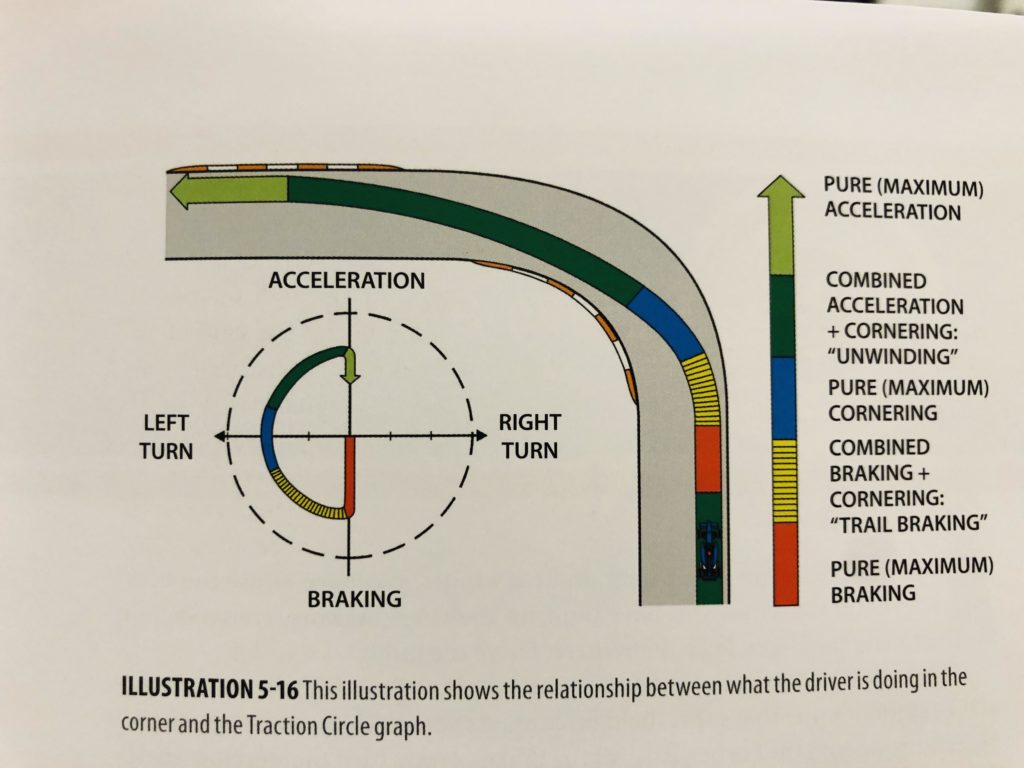
Which circle could your ride around fastest? The big one? The small one? Which one would require less or
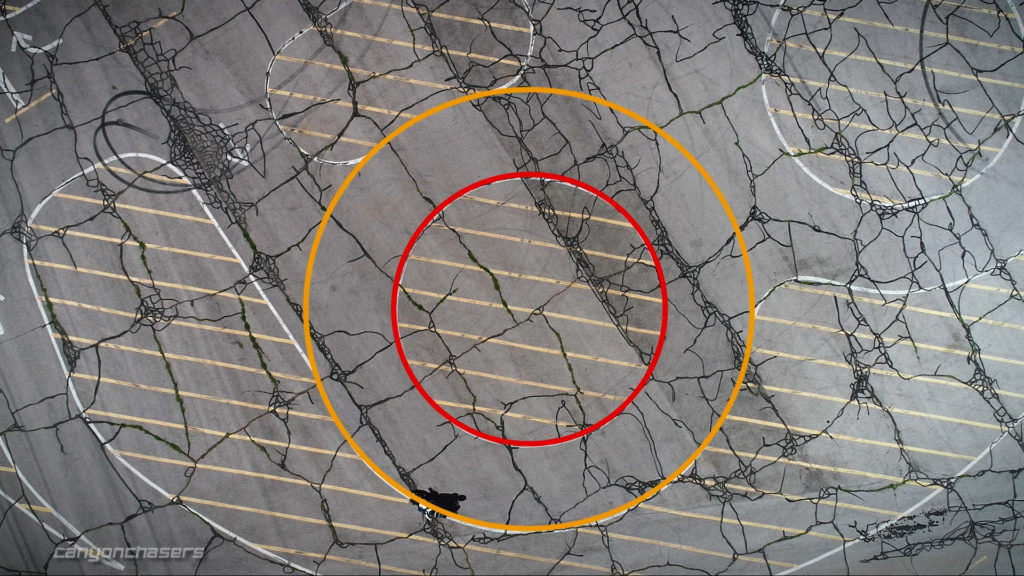
This is a fundamental law of motorcycling. Speed and Radius are inexorably linked. Now throw traction into the mix, the more we
If you’ve watched our trail braking video, then you heard me talk about making the circle smaller by slowing or making the circle bigger by going faster. When we go to the gas the bike stops turning, and the circle starts to get bigger unless you add more lean angle. Riders who stick with the Slow, Look, Press and Roll method, particularly in tight, technical corners, tend to struggle with running wide. So, why is that?
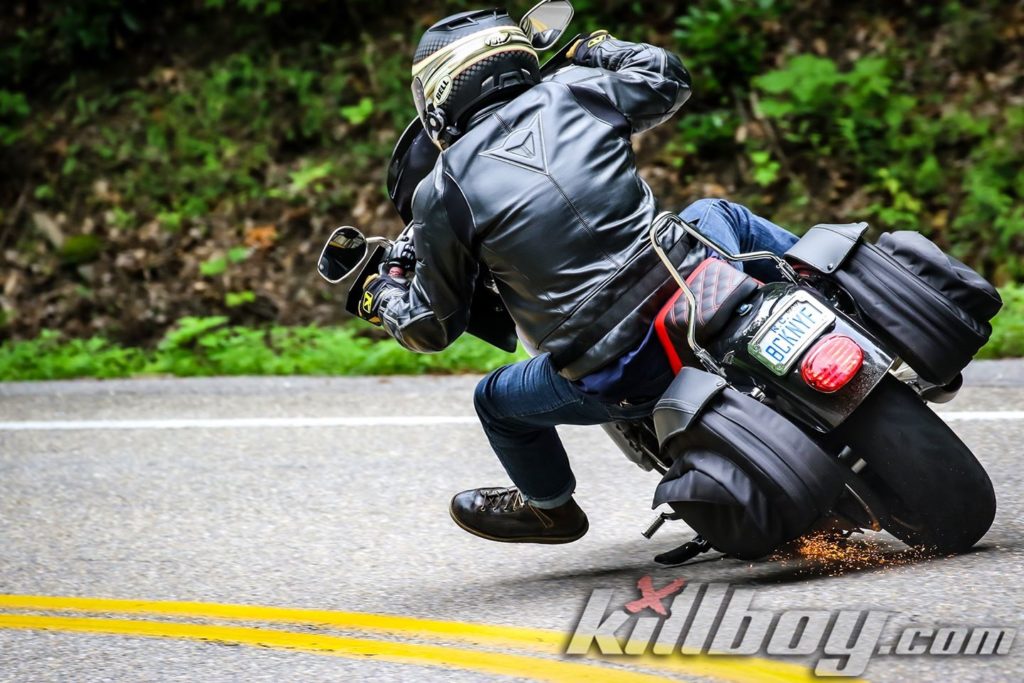
Well, first, lean angle is not infinite, and is largely dependant upon the type of bike we are on, what kind and what condition our tires are in, how much luggage or if we have a passenger, how good is our cornering posture (check out our perfect posture video) and honestly, how comfortable we are with lean angle. And then there are all the road condition variables to consider. Is it uphill, downhill, off-camber, banked, wet or dry?
The reality is a lot of riders give up in a corner when they get scared simply because they were uncomfortable or afraid to lean the bike any further. Sure, some may say “well, just lean more.” But I say there’s a better way to approach this than trying to muscle past your fear. That approach is to have a plan for every corner we ride into. And part of that plan is defining our entrance, apex, and exit.
What Is An Apex?
Well, within the context of motorcycling, the entrance is where we begin turning, the exit is where we are finished turning and the apex is the point where the bike is closest to the inside of the corner, while still being in our lane. Typically, about 2/3rd to 3/4s of the way through a corner.
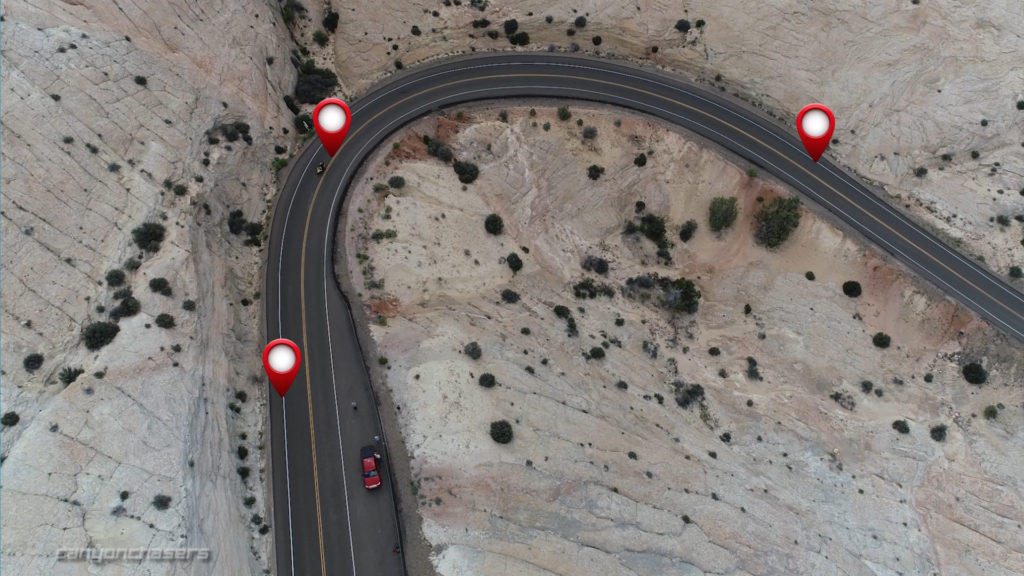
But a lot of us, and dare I say, most of us, tend to apex too soon. We tend to go to the inside of the corner early or “rush our apex”. Why? Well, because it “feels” safer. Especially riders who use the slow, look, press and roll method. These riders tend to apex early because as I just mentioned, as soon as we go to the gas the bike stops turning and wants to go wide, so having all that extra space feels “safer.” But is it actually safer?
Outside Entrance
We want to:
- Straighten the turn and reduce lean angle.
- Put our tires on the cleanest part of the road
- Increase how far we can see through the corner as much as we can
- Get on the gas and accelerate out of the corner safely.
- Stay on the road and in our lane.
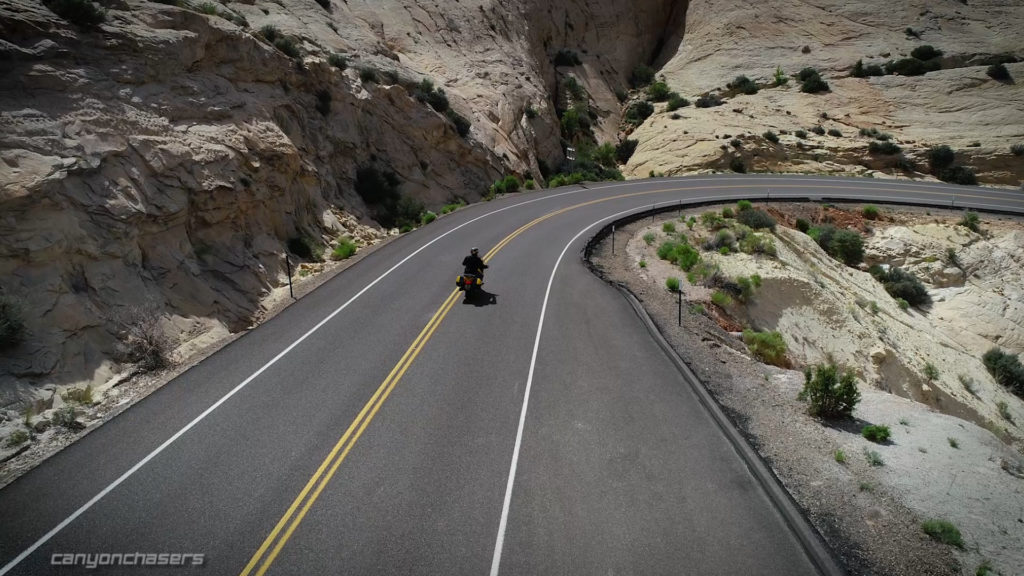
Staying wide, and gently slowing, until we can see our exit, and then defining our apex is one of the best ways to achieve all of these goals. And one of the most important steps required to put ourselves in the best position to do all this is to enter the corner as wide as we safely can. Let me say this again, we want to enter corners as wide as we safely can.
Line Up Our Exit
So, we know that want to enter wide and then apex, be closest to the inside of a corner, about 2/3rds of the way through the turn (give or take). But if it’s a corner we’ve never been through, or a corner we can’t see all the way through, how on earth can we tell where 2/3rds is? How do we find that apex?
Well, as we enter a corner wide, we want to stay wide until we can see, and line up, our exit with our apex. So, if we were to draw a straight line
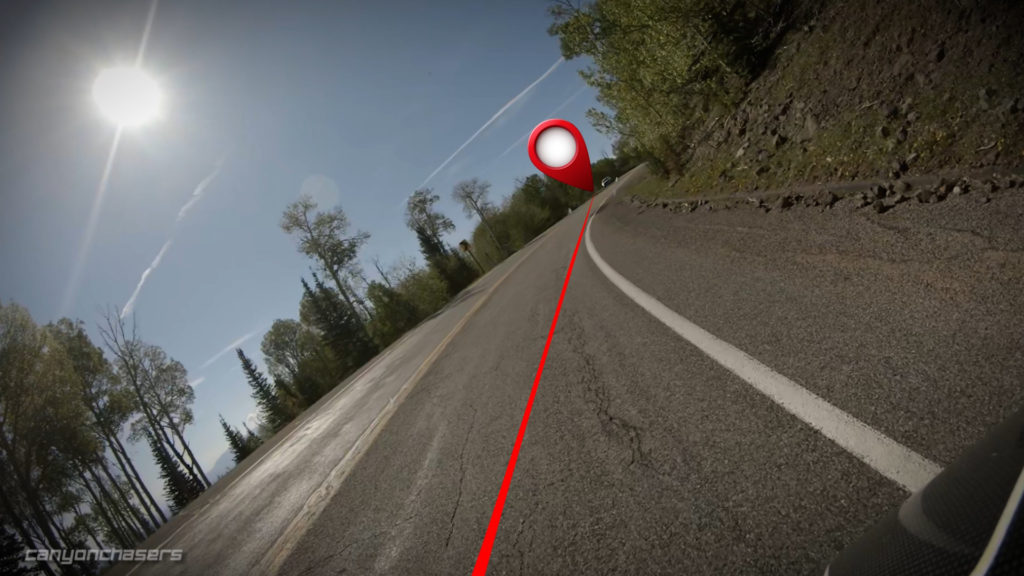
But one thing, especially as street riders that we need to keep in mind, even if our tires are in our lane, our body and our bike may not be. This is most relevant if the inside line of a corner is also the centerline for the highway. For street riding, our lane is our limit. We never want to cross that centerline, with our tires or even just our head.
Add Trail Braking for More Precision
If we are trail braking into our corners, which we really should be, we will be gently slowing until we can see our exit and identify our apex. If we are doing everything right, in most cases, this point will be where the bike will have the
We can basically trail brake, gently slow with our front brake, to decrease speed, which “makes the circle smaller” to steer the bike down and to the a
Add Throttle as You Reduce Lean
Remember that as soon as you go to the throttle the bike stops turning. Well, now that we have arrived at our apex, we can use that to bring the bike up and out of the corner. And just for clarity, as this is probably the most common question we see on this topic, the throttle should be closed, stay off the gas, until you can see your exit, define your apex and then you can begin adding throttle and taking away lean angle.
We only want to use one control at a time and the more we lean, the less pressure we should put onto the front brake, but
Advantages
Think of it like this: We like how quickly we can get to the gas on the red circle, but entering on the inside of that corner means we have to be going much slower and we can’t see very far. We like the visibility that the yellow circle supplies, but we don’t get pointed towards the exit for a very long time so we have to wait longer before we can go back to the gas. The orange circle is the natural combination between the yellow circle and the red circle.
But by taking the best components of the yellow and red circle, instead of an average like the orange circle, we come up with the blue line, which is the best of all pieces. We get to enter wide with visibility, we get to slow longer for more accurate and precise control, we are at max lean for a lot less time, reducing risk, we get pointed the way we want to go earlier and get to accelerate past the Apex, making the next straight bit a little longer.

And that is basically the point. The key to a good corner is how we exit that corner. We are slower and more cautious going into a turn so that we can set ourselves up for a strong, fast exit.
Motorcycles simply behave and turn better using the delayed apex method. It’s the method used by every single pro racer you see on the track, and if you watch m
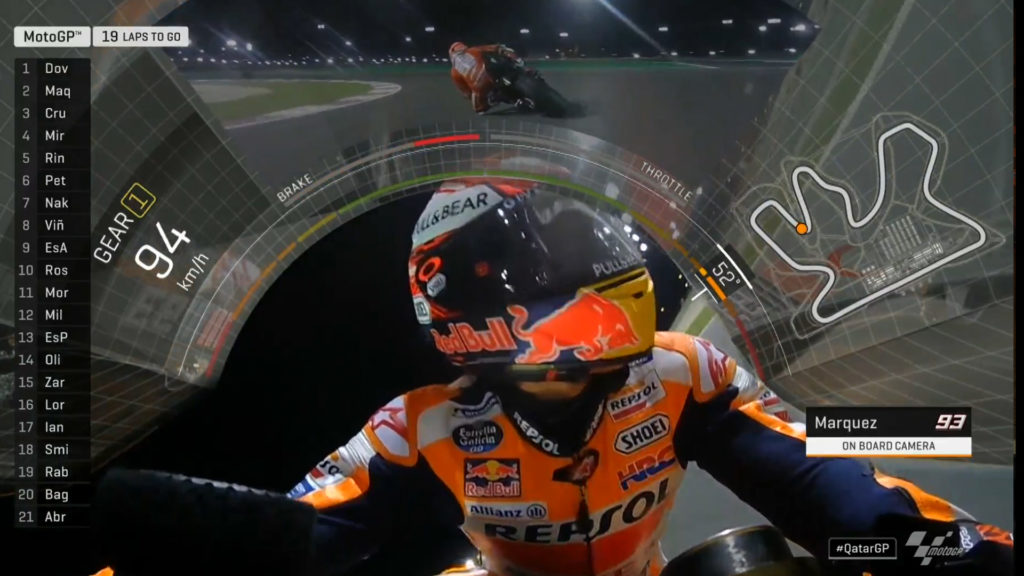
But for us mere mortals riding on the street or even a local track day, the delayed apex, particularly when combined with trail braking, is this blissful and repeatable combination of inputs to give us a clear plan for every corner we enter, whether that be a freeway
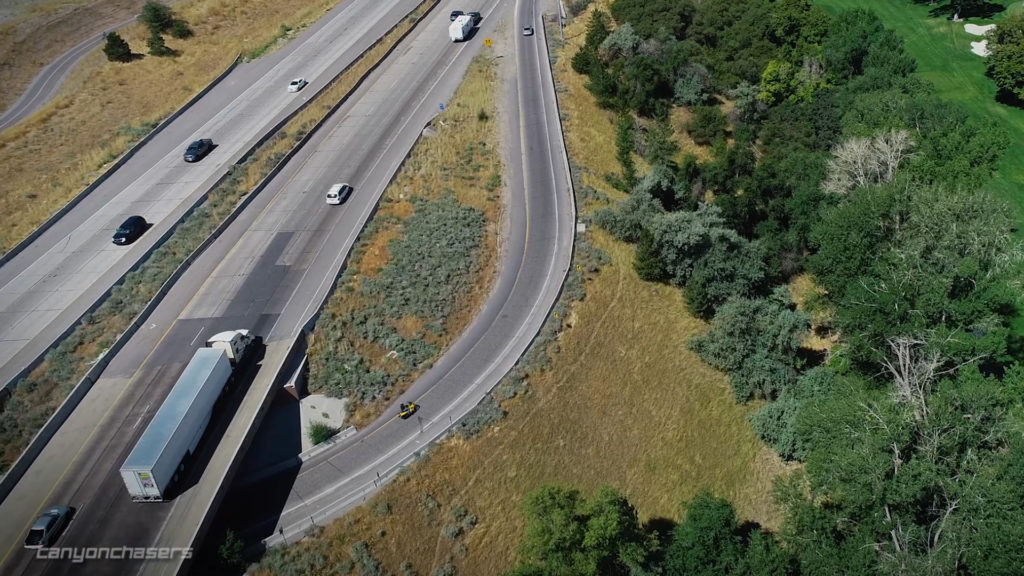
Summary
Look, “the line” is past tense. It’s a great way to explain where we’ve been, but it’s a terrible planning tool. It’s not like those video games with a line showing you the way around a corner that turns colors if you are going too fast. But with entrance, apexes, and exits, we can look for and define the specific points and achieve repeatable results. If it’s a corner we do all the time we can play with them, apex a little sooner and see what happens, apex a little later to see how that feels.
And we can self evaluate based on these points. For example: If you find yourself running wide on corner exits, having to pull the bike back onto the road, that just means that either you apexed too soon, you “rushed” your apex, or went to your throttle too soon or too abruptly (which we’ve all done), but now you know that next time or for the next time you ride that corner, move your apex further away or be more patient with how and when you apply the throttle.
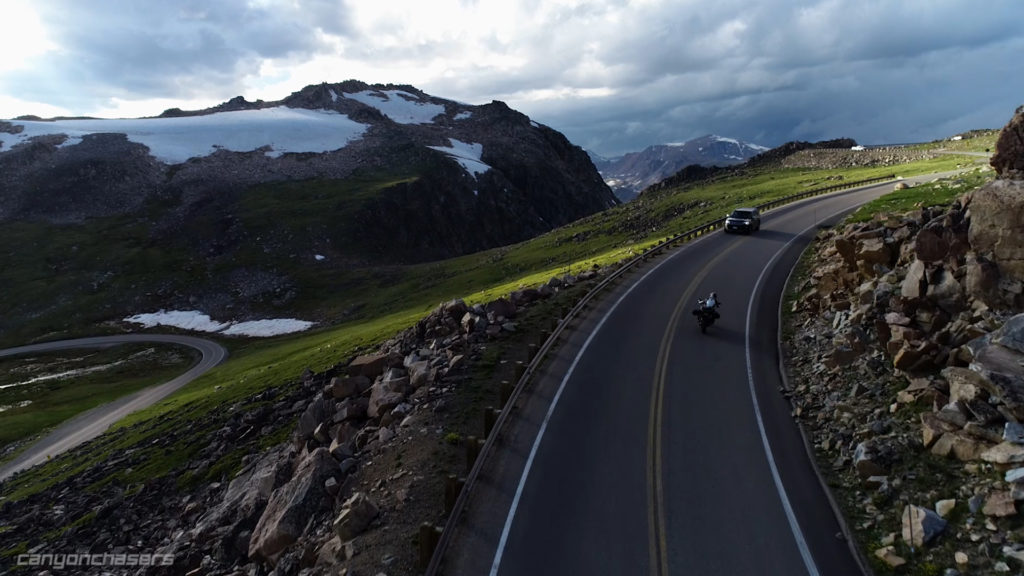
Here’s the cool thing; wide entrances, delayed apexes and fast exits are one of those rare instances where not only does it reduce risk, but it’s also one of the quicker ways to ride a corner, because you are going slowest when you are leaned the most and it basically makes the next straight away just a little bit longer. Fast riders aren’t necessarily fast in the corners, fast riders are fast getting out of the corners.
One of my favorite questions when I’m coaching out at the track is when a rider comes up and asks “I just can’t find a fast line through that really tight corner” And I have to explain to them, it’s a slow corner. There is no fast line through a slow corner, but if you conservative at the beginning, trail brake and enter wide, then delay your apex, you can at least enjoy a fast exit.
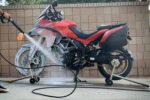
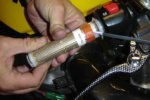
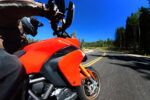

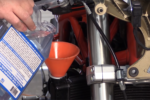

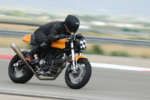


Thank you for this. Illustration 5-16 helped tremendously. Is there any issue you see with covering the front brake through turns(until you have to accelerate out ) but also using it as your primary brake over the rear? say 55-45 front – rear
Yes, you should rely mostly on your front brake and should be slowing until you can take away lean angle and you can see your exit.
Hello Dave, could you share which textbook you were using for Illustration 5-16? It looks like a book worthy of bringing into my library.
I honestly don’t remember the title. I saw it in a bookstore years ago and took a photo of that diagram with my phone. It was an F1 book though.
The amount of trail braking you recommend can be very dangerous unless conditions are perfect.
For instance, here in coastal California roads are cut into soil that’s loose and pebbley. That’s just how the soil is in many places. As a result, there’s often loose bits of pebbles and larger gravel on corners, especially in the middle of the inside lane. Using your late trail braking, a rider could brake right into those rock-strewn areas and lose the front end.
Another problem here is the thin moss that grows on the pavement in foggy areas. Over the winter the moss grows from all the rain, then dries in the rainless spring, then grows again in the foggy summer, then dries again in the fall. The moss is very thin and difficult to see. And while it dries in the non-rainy seasons, it quickly gets slippery as all heck with just a little fog or rain. Trail braking on these roads is just plain dangerous.
I front brake before I turn in, but if conditions are right on roads that I know, I’ll transition to a little trail braking. But only then. Risking losing the front is not for me.
Right, but in your comment you regularly refer to it as “late braking” that is not at all what trail braking is. Late braking, as you assess, is indeed very risky. But trail braking is still doing the majority of your braking before the corner and then dragging or trailing off the brake as you enter the corner, to keep that front tire pressed into the road. Gently slide your hand across the desk. Not put weight on your hand and try to slide your hand again. Wet or dry surface, the weight on your hand makes it harder to slide.
We ride a ton in up and down the pacific coast and trail brake constantly. In fact, California’s far more technical roads, constantly changing conditions, and yes, even in the rain, trail braking is a literal life saver. But just like we don’t accelerate or lean as hard/fast in the wet, we also don’t don’t brake as aggressively/abruptly. Everything slows down and is done more gently, but I assure you, trail braking actually decreases the risk of losing the front.